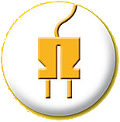|
123456789101112131415161718192021222324252627282930313233343536373839404142434445464748495051525354555657585960616263646566676869707172737475767778798081828384858687888990919293949596979899100101102103104105106107108109110111112113114115116117118119120121122123124125126127128129130131132133134135 |
- // Protocol Buffers - Google's data interchange format
- // Copyright 2008 Google Inc. All rights reserved.
- // https://developers.google.com/protocol-buffers/
- //
- // Redistribution and use in source and binary forms, with or without
- // modification, are permitted provided that the following conditions are
- // met:
- //
- // * Redistributions of source code must retain the above copyright
- // notice, this list of conditions and the following disclaimer.
- // * Redistributions in binary form must reproduce the above
- // copyright notice, this list of conditions and the following disclaimer
- // in the documentation and/or other materials provided with the
- // distribution.
- // * Neither the name of Google Inc. nor the names of its
- // contributors may be used to endorse or promote products derived from
- // this software without specific prior written permission.
- //
- // THIS SOFTWARE IS PROVIDED BY THE COPYRIGHT HOLDERS AND CONTRIBUTORS
- // "AS IS" AND ANY EXPRESS OR IMPLIED WARRANTIES, INCLUDING, BUT NOT
- // LIMITED TO, THE IMPLIED WARRANTIES OF MERCHANTABILITY AND FITNESS FOR
- // A PARTICULAR PURPOSE ARE DISCLAIMED. IN NO EVENT SHALL THE COPYRIGHT
- // OWNER OR CONTRIBUTORS BE LIABLE FOR ANY DIRECT, INDIRECT, INCIDENTAL,
- // SPECIAL, EXEMPLARY, OR CONSEQUENTIAL DAMAGES (INCLUDING, BUT NOT
- // LIMITED TO, PROCUREMENT OF SUBSTITUTE GOODS OR SERVICES; LOSS OF USE,
- // DATA, OR PROFITS; OR BUSINESS INTERRUPTION) HOWEVER CAUSED AND ON ANY
- // THEORY OF LIABILITY, WHETHER IN CONTRACT, STRICT LIABILITY, OR TORT
- // (INCLUDING NEGLIGENCE OR OTHERWISE) ARISING IN ANY WAY OUT OF THE USE
- // OF THIS SOFTWARE, EVEN IF ADVISED OF THE POSSIBILITY OF SUCH DAMAGE.
-
- syntax = "proto3";
-
- package google.protobuf;
-
- option csharp_namespace = "Google.Protobuf.WellKnownTypes";
- option cc_enable_arenas = true;
- option go_package = "github.com/golang/protobuf/ptypes/timestamp";
- option java_package = "com.google.protobuf";
- option java_outer_classname = "TimestampProto";
- option java_multiple_files = true;
- option objc_class_prefix = "GPB";
-
- // A Timestamp represents a point in time independent of any time zone
- // or calendar, represented as seconds and fractions of seconds at
- // nanosecond resolution in UTC Epoch time. It is encoded using the
- // Proleptic Gregorian Calendar which extends the Gregorian calendar
- // backwards to year one. It is encoded assuming all minutes are 60
- // seconds long, i.e. leap seconds are "smeared" so that no leap second
- // table is needed for interpretation. Range is from
- // 0001-01-01T00:00:00Z to 9999-12-31T23:59:59.999999999Z.
- // By restricting to that range, we ensure that we can convert to
- // and from RFC 3339 date strings.
- // See [https://www.ietf.org/rfc/rfc3339.txt](https://www.ietf.org/rfc/rfc3339.txt).
- //
- // # Examples
- //
- // Example 1: Compute Timestamp from POSIX `time()`.
- //
- // Timestamp timestamp;
- // timestamp.set_seconds(time(NULL));
- // timestamp.set_nanos(0);
- //
- // Example 2: Compute Timestamp from POSIX `gettimeofday()`.
- //
- // struct timeval tv;
- // gettimeofday(&tv, NULL);
- //
- // Timestamp timestamp;
- // timestamp.set_seconds(tv.tv_sec);
- // timestamp.set_nanos(tv.tv_usec * 1000);
- //
- // Example 3: Compute Timestamp from Win32 `GetSystemTimeAsFileTime()`.
- //
- // FILETIME ft;
- // GetSystemTimeAsFileTime(&ft);
- // UINT64 ticks = (((UINT64)ft.dwHighDateTime) << 32) | ft.dwLowDateTime;
- //
- // // A Windows tick is 100 nanoseconds. Windows epoch 1601-01-01T00:00:00Z
- // // is 11644473600 seconds before Unix epoch 1970-01-01T00:00:00Z.
- // Timestamp timestamp;
- // timestamp.set_seconds((INT64) ((ticks / 10000000) - 11644473600LL));
- // timestamp.set_nanos((INT32) ((ticks % 10000000) * 100));
- //
- // Example 4: Compute Timestamp from Java `System.currentTimeMillis()`.
- //
- // long millis = System.currentTimeMillis();
- //
- // Timestamp timestamp = Timestamp.newBuilder().setSeconds(millis / 1000)
- // .setNanos((int) ((millis % 1000) * 1000000)).build();
- //
- //
- // Example 5: Compute Timestamp from current time in Python.
- //
- // timestamp = Timestamp()
- // timestamp.GetCurrentTime()
- //
- // # JSON Mapping
- //
- // In JSON format, the Timestamp type is encoded as a string in the
- // [RFC 3339](https://www.ietf.org/rfc/rfc3339.txt) format. That is, the
- // format is "{year}-{month}-{day}T{hour}:{min}:{sec}[.{frac_sec}]Z"
- // where {year} is always expressed using four digits while {month}, {day},
- // {hour}, {min}, and {sec} are zero-padded to two digits each. The fractional
- // seconds, which can go up to 9 digits (i.e. up to 1 nanosecond resolution),
- // are optional. The "Z" suffix indicates the timezone ("UTC"); the timezone
- // is required. A proto3 JSON serializer should always use UTC (as indicated by
- // "Z") when printing the Timestamp type and a proto3 JSON parser should be
- // able to accept both UTC and other timezones (as indicated by an offset).
- //
- // For example, "2017-01-15T01:30:15.01Z" encodes 15.01 seconds past
- // 01:30 UTC on January 15, 2017.
- //
- // In JavaScript, one can convert a Date object to this format using the
- // standard [toISOString()](https://developer.mozilla.org/en-US/docs/Web/JavaScript/Reference/Global_Objects/Date/toISOString]
- // method. In Python, a standard `datetime.datetime` object can be converted
- // to this format using [`strftime`](https://docs.python.org/2/library/time.html#time.strftime)
- // with the time format spec '%Y-%m-%dT%H:%M:%S.%fZ'. Likewise, in Java, one
- // can use the Joda Time's [`ISODateTimeFormat.dateTime()`](
- // http://www.joda.org/joda-time/apidocs/org/joda/time/format/ISODateTimeFormat.html#dateTime--
- // ) to obtain a formatter capable of generating timestamps in this format.
- //
- //
- message Timestamp {
-
- // Represents seconds of UTC time since Unix epoch
- // 1970-01-01T00:00:00Z. Must be from 0001-01-01T00:00:00Z to
- // 9999-12-31T23:59:59Z inclusive.
- int64 seconds = 1;
-
- // Non-negative fractions of a second at nanosecond resolution. Negative
- // second values with fractions must still have non-negative nanos values
- // that count forward in time. Must be from 0 to 999,999,999
- // inclusive.
- int32 nanos = 2;
- }
|
